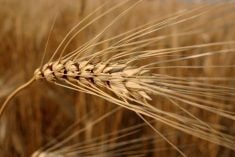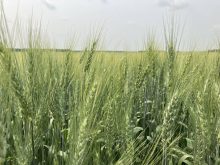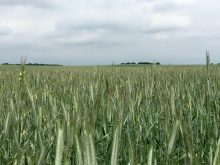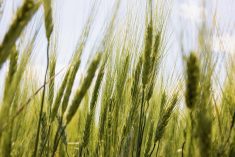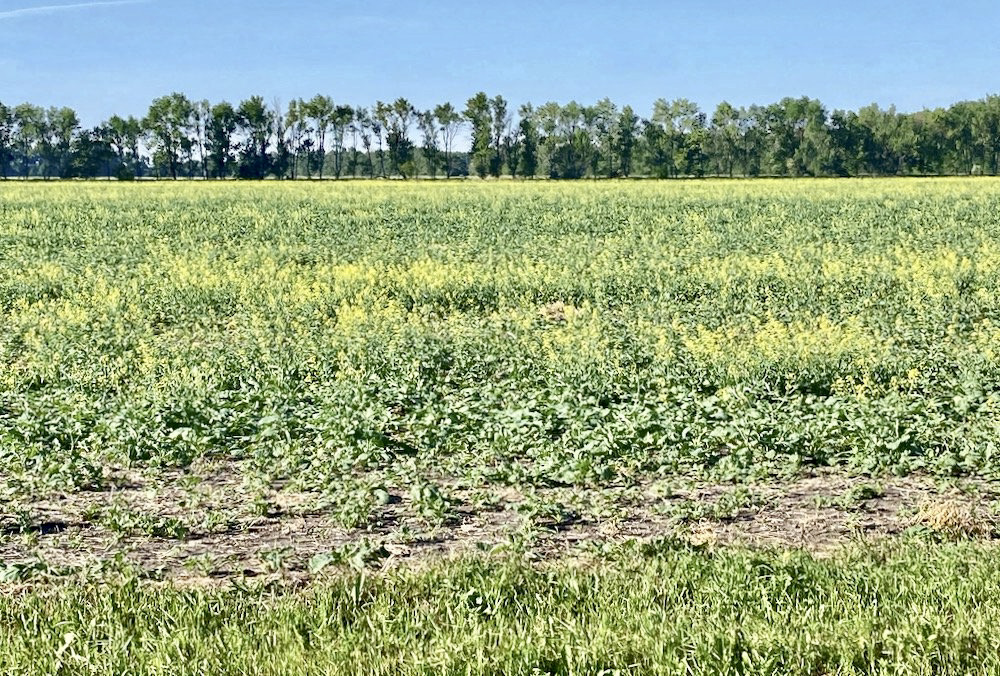Last spring, auction mart chat turned a problem with ergot in grasses. The conversation pointed towards lame cattle resulting from feeding timothy straw. My curiosity piqued because a high percentage of cattle producers have been feeding everything from timothy straw to pea straw, to canola straw and bakery waste for the last few years, so there had to be something more to this. Manitoba Agriculture has also been very helpful in matching feed sources with livestock producers in need.
A bit of research showed that ergot (alkaloid poisoning) is the root of the problems. Ergot-infected feed is dangerous to livestock because it constricts blood flow. If fed at high-enough rates it will cause lameness, loss of body parts from gangrene, abortions in pregnant animals, seizures and eventually death. Consumption of contaminated feeds with sub-lethal doses may still lead to problems of poor growth and performance, loss of milk production and animals going “off feed.” They will recover from these milder symptoms when contaminated feed is removed. Animals differ in their susceptibility to ergot poisoning. Young or pregnant animals are considered highly susceptible. The prevalence of ergot in Canada is rising dramatically.
Read Also

Harvest wraps up and fall work begins
At the Eppich famly ranch in western Saskatchewan, the fall harvest was successful with few breakdowns, cows and calves have been sorted and a new tractor has arrived
Historically, rye was commonly affected by the ergot fungus but wheat, barley, oats, brome, fescue, blue, timothy and other grasses can also be infected. The fungus produces toxic compounds called ergot alkaloids. Their type and quantity depend on the actual species of ergot but they are all dangerous. Hay cut after the grasses have headed out is susceptible to ergot growth.
Hay and pastures are only in danger of being infected if the fungus has been introduced and only when the plants go to seed. This is where late-harvested grasses such as timothy can be contaminated.
Check seed heads
To identify ergot, producers have to inspect the seed heads for dark brown, purple or black bodies. The fungus produces a mass called sclerotia that completely replaces the ovary tissue of the plant and is often larger than a typical seed. They are easy to see because they pop out of the seed heads and are very visible. These sclerotia will eventually fall to the ground and overwinter infecting pastures and fields in future years.
According to many sources, affected fields need to be deep plowed — ergot cannot germinate if buried more than one inch and therefore will not release its spores into the air. This is perfect for an annual crop but leaves pasture management difficult. Ripping up and reseeding is a common option if ergot has been identified.
Because the incidence and severity of future outbreaks will vary with climatic conditions, economics might make a producer wait and determine the presence and severity each year by careful field inspection, and use rotational grazing instead of pasture renovation to minimize risk to livestock.
When there are no other options but to feed hay or grain with suspected contamination, North Dakota State University has some easy-to-measure guidelines. Pigs have zero tolerance for ergot, while for all other species, the maximum limit is one kernel per 1,000 or 0.1 per cent by weight (10 ergot bodies per litre of grain). Some feed mills will not accept grain deliveries with ergot levels above 0.04 to 0.06 per cent. It can make selling a contaminated crop quite difficult.
Another problem with feed contaminated with ergot is that even at a low rate, which is not clearly established, animals can go off feed or just be unthrifty. Feedlot buyers know this and are watching for livestock with tell-tale signs such as short tails and “frozen” ears. Not only could there be lung damage from exposure to freezing temperatures but if the animals are actually displaying signs of ergot exposure they will have a potential problem with feed conversion.
The last few years of bizarre weather have spurred on a lot of learning. There will surely be a lot more to come. Wishing everyone a peaceful winter without too many storms and blizzards.



